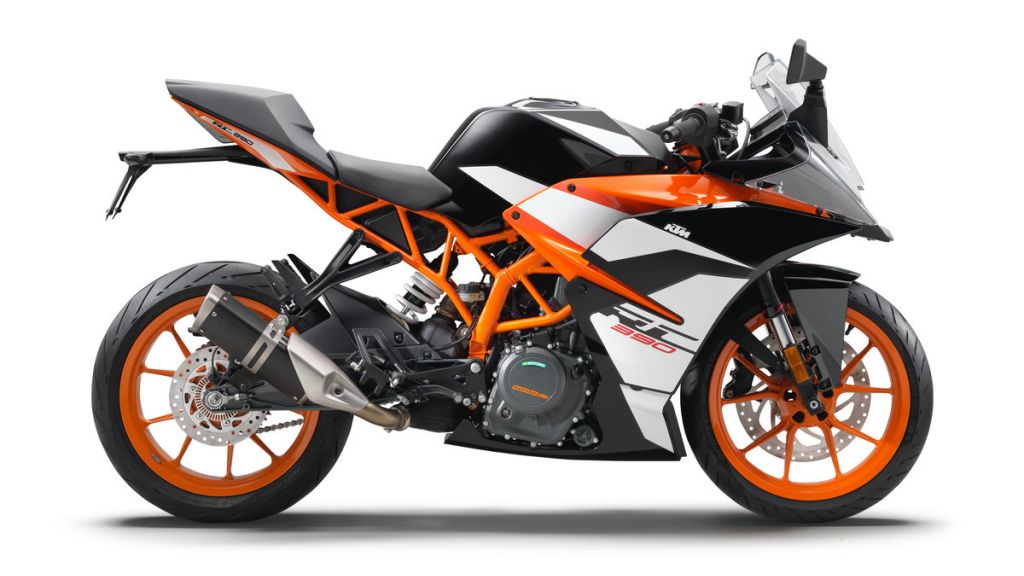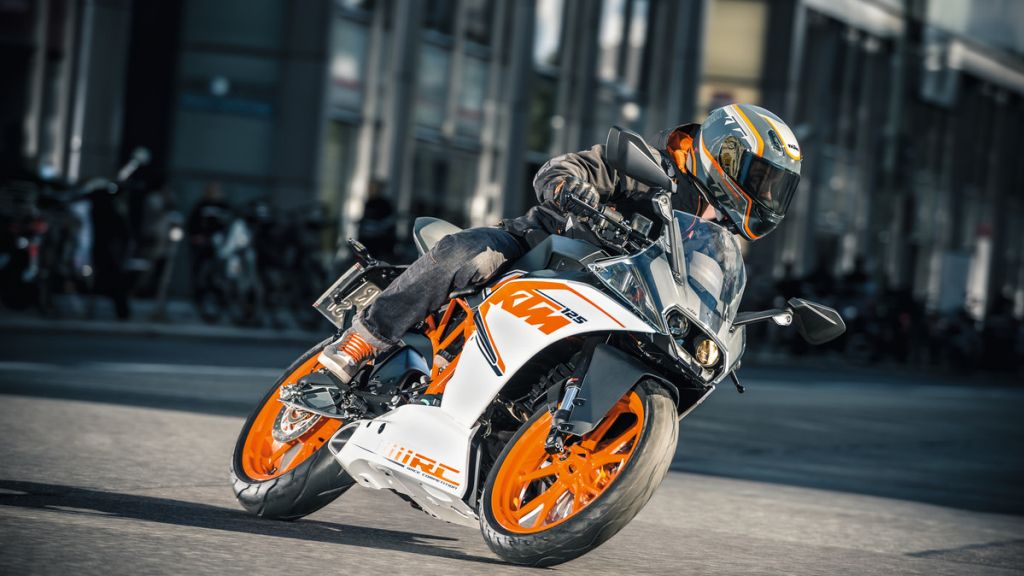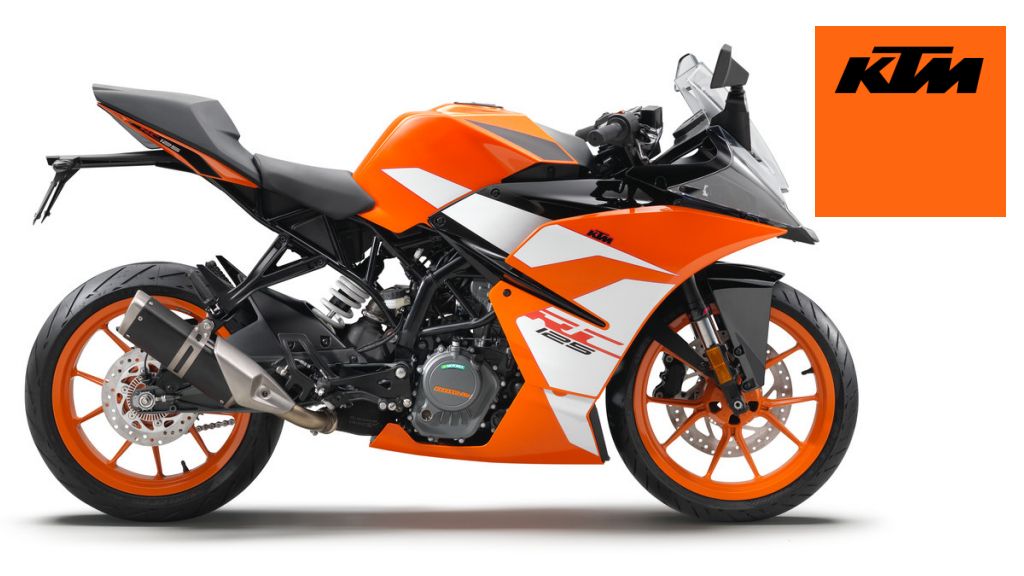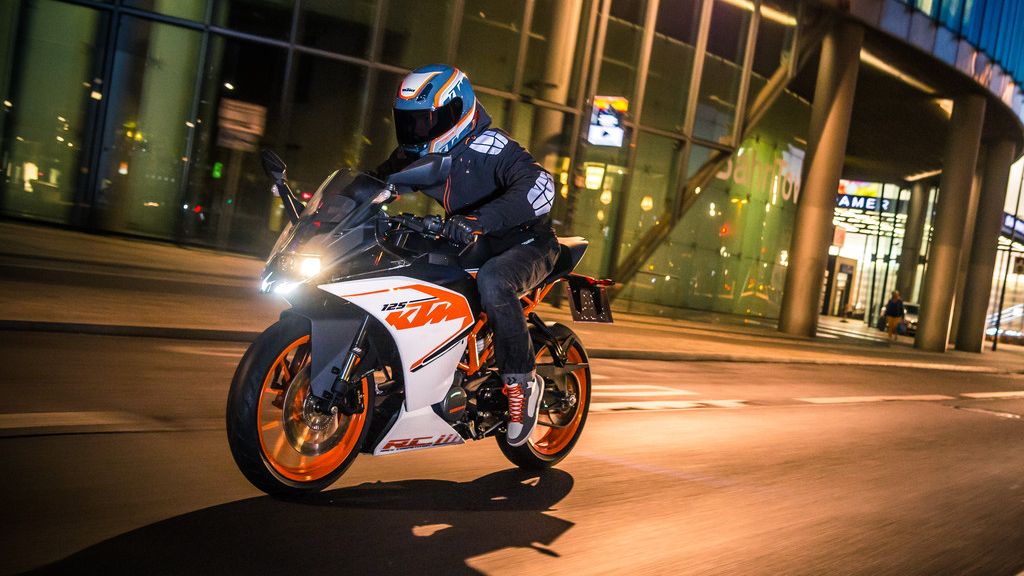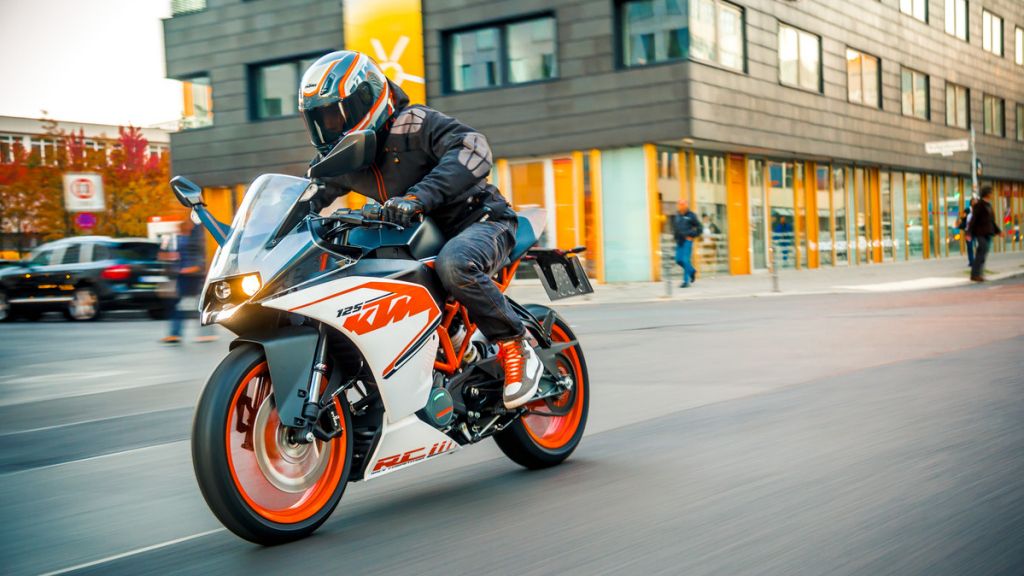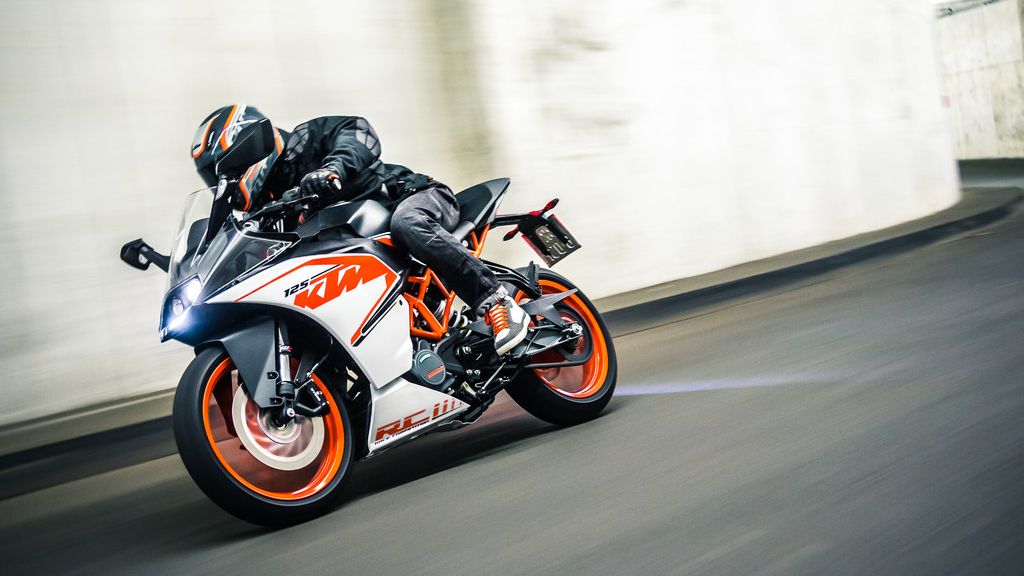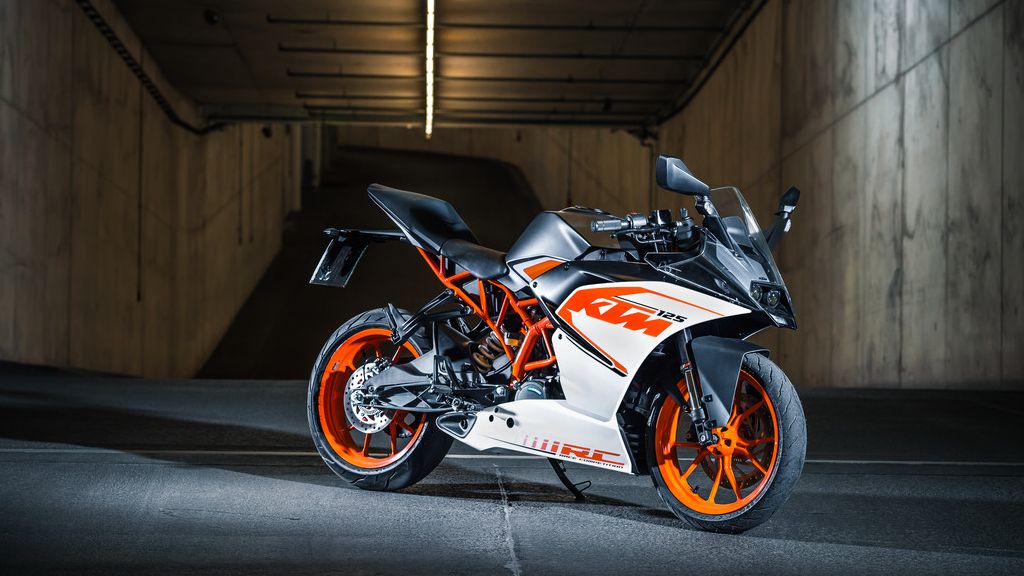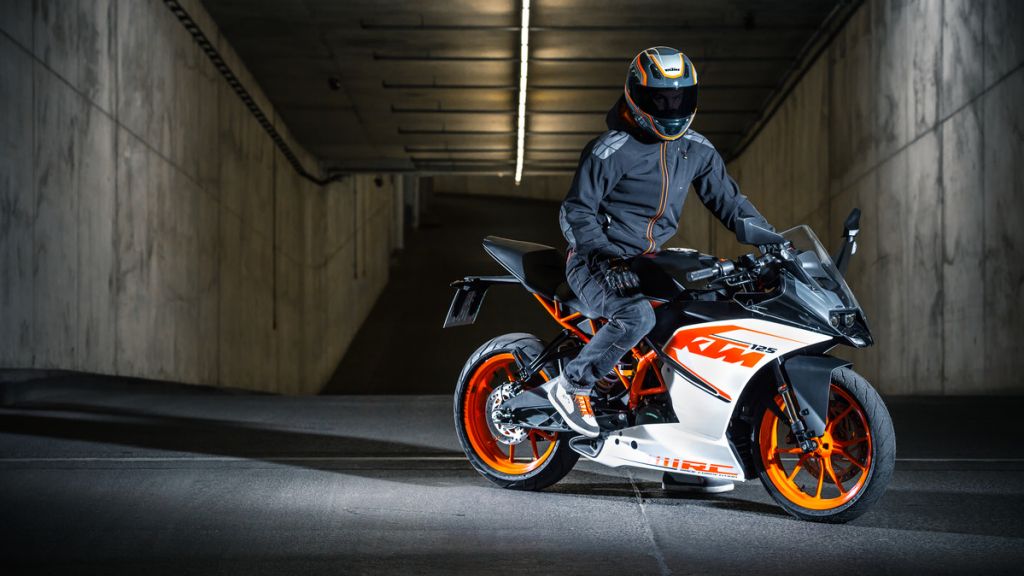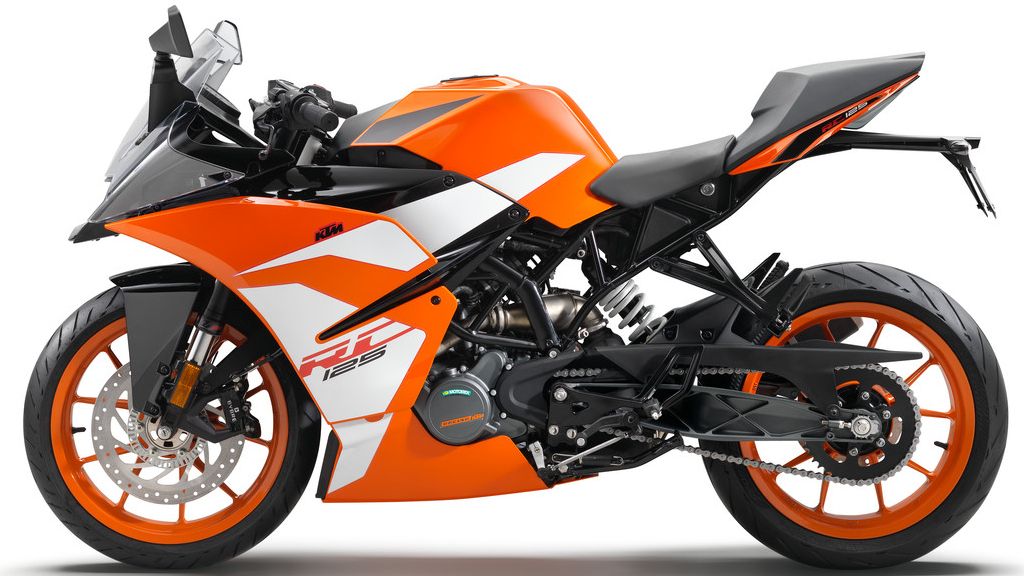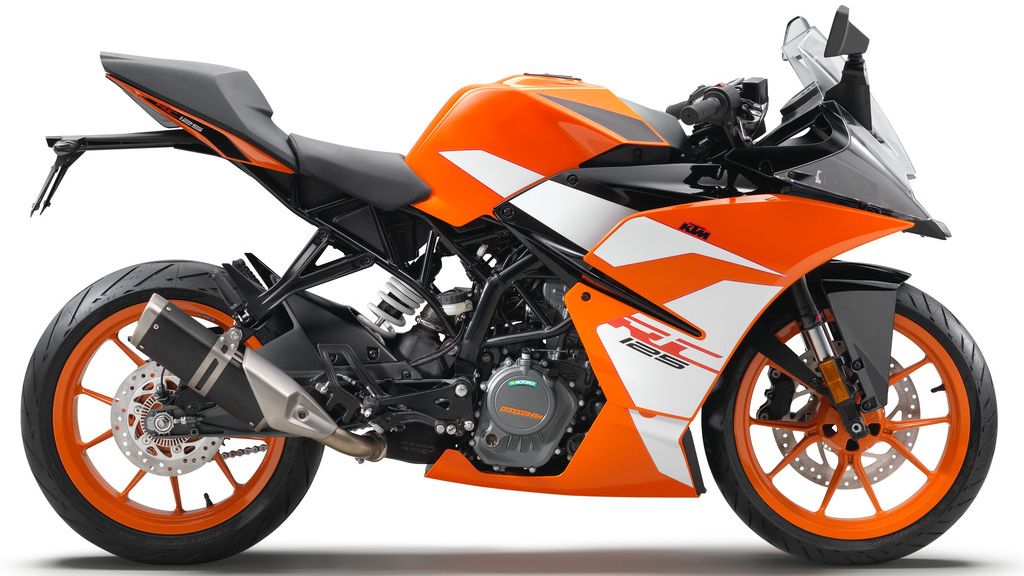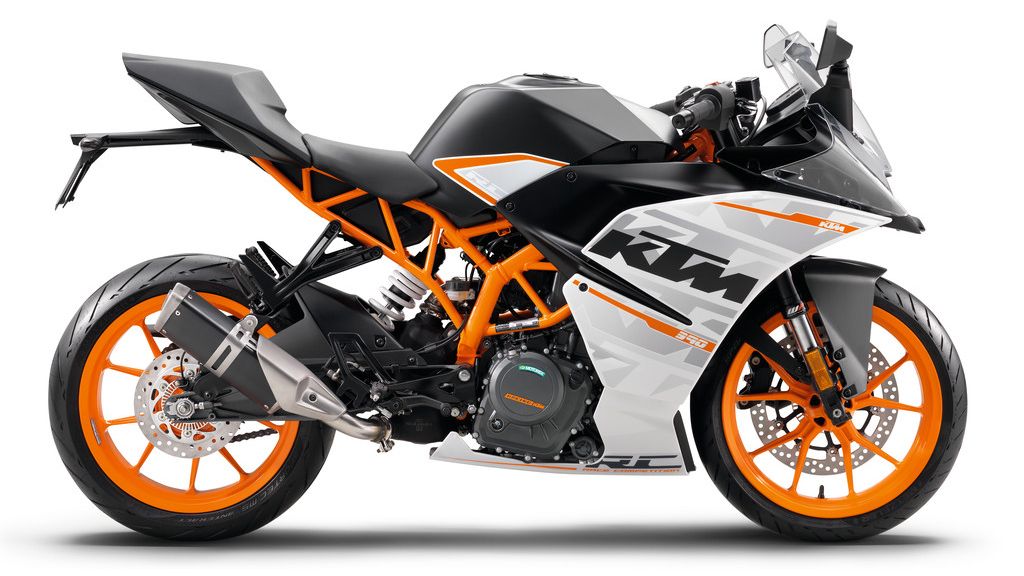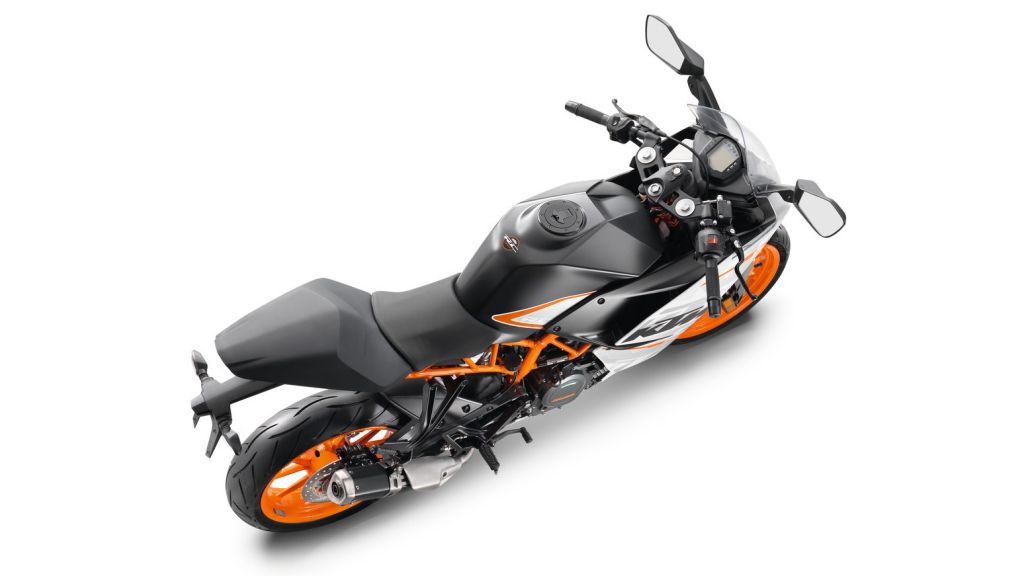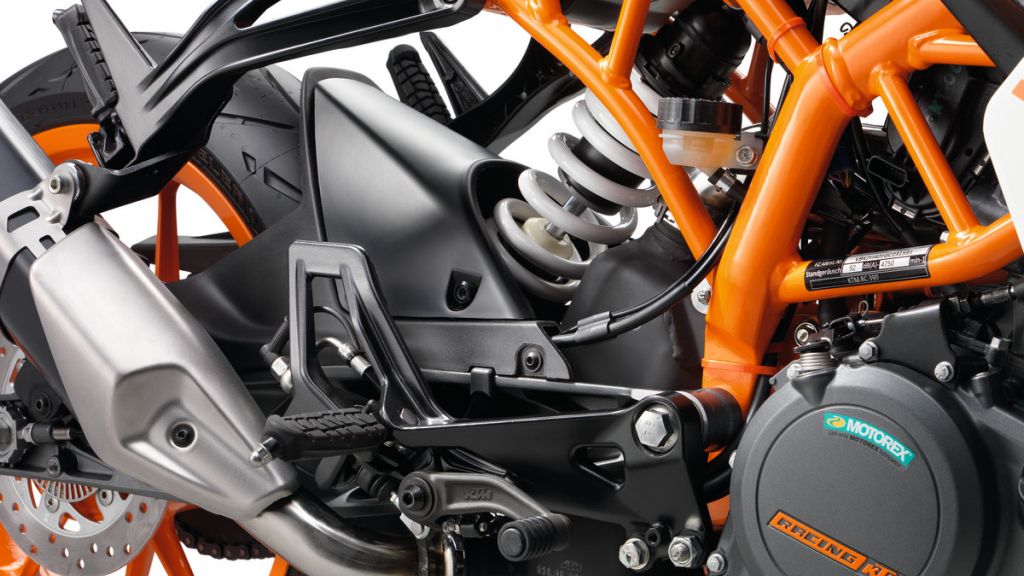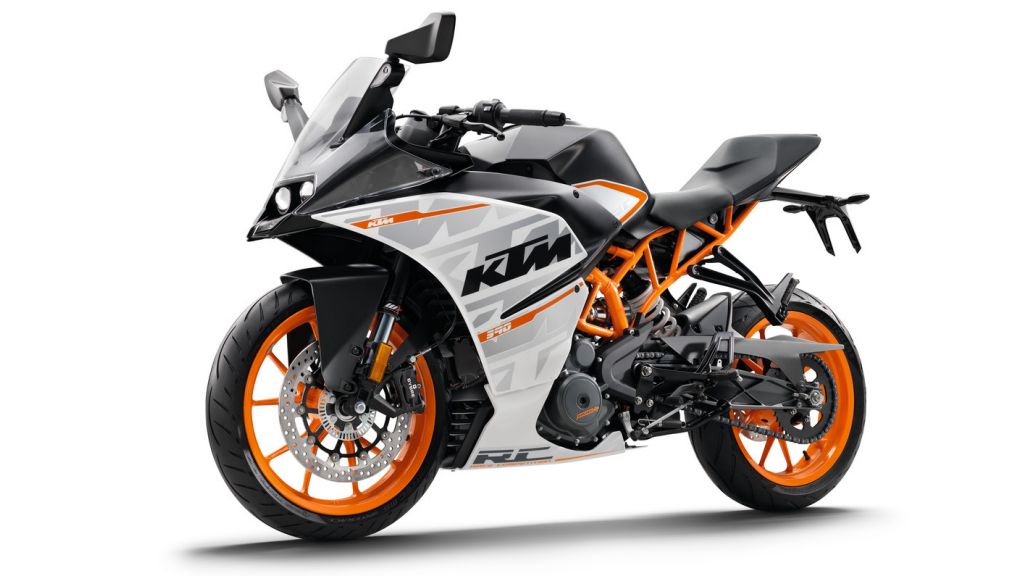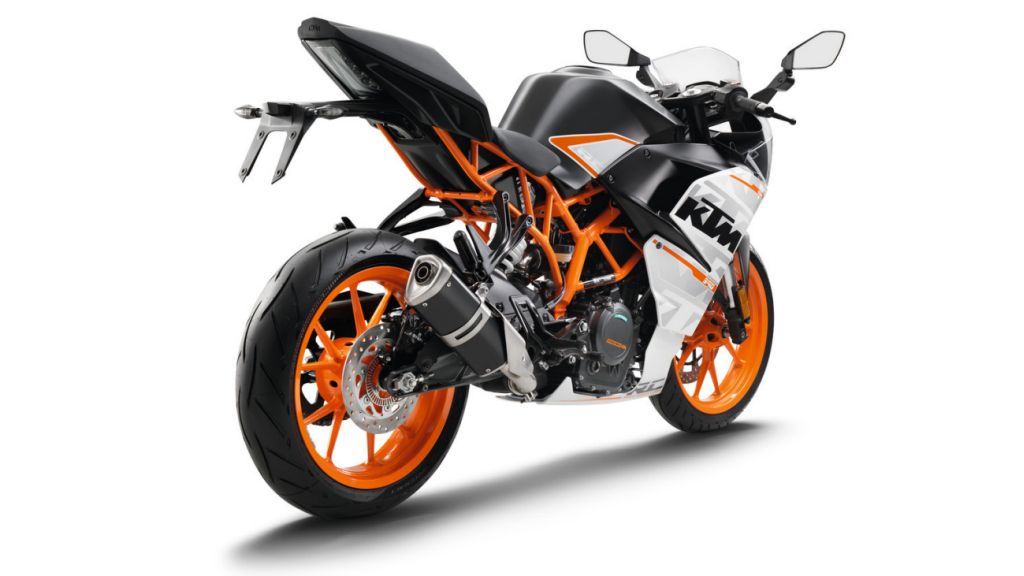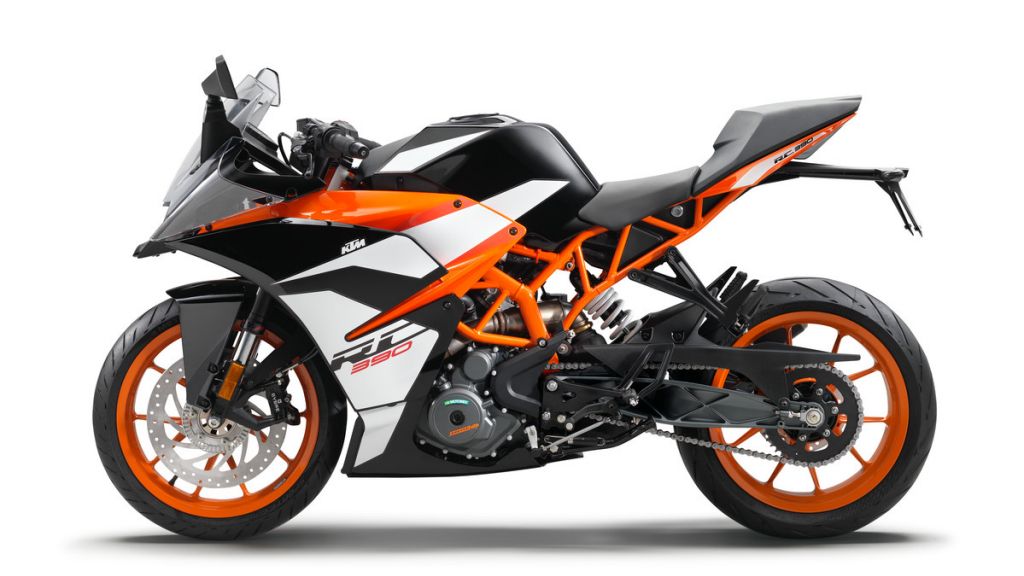Indoctrination works best when it starts at the earliest opportunity, and KTM->ke1954 goes to work on the entry-level with its RC 125 and RC 390 sportbikes->ke631. Both come completely street legal, and though it doesn't affect the U.S., some buyers will be glad to hear that at 15 horsepower, the RC 125 falls at the top of the power bracket for A1 licensing. Though neither bike is built for what you might call blistering speeds, they really shine when it comes to the handling performance. Each can serve not only as an entry-level streetbike, but as a race trainer as well and the smaller cc engines make sporty commuters->ke5324. The race to the bottom-tier market is hotter than ever and KTM is working to stay competitive in such a populated bracket.
Continue reading for my review of the KTM RC 125 and RC 390.
2017 KTM RC 125 / RC 390
- Make: Array
- Model: 2017 KTM RC 125 / RC 390
- Engine/Motor: inline-1
- [do not use] Vehicle Model: Array
Design
(RC 125)
Nose-down and tail-up, the stance makes it look faster than it really is. An aggressive entry flows into the engine cowling that stops short to leave half of the Trellis frame exposed for a sort of hybrid naked->ke5317-sportbike look. I kind of like this blend of attributes, and think it speaks to the function-over-form attitude of the engineers during development.
Jockey-mount footpegs and clip-on handlebars put the rider in a relatively upright position, but they leave plenty of room to tuck in and throw some body English into the corners. An up-swept exhaust and narrow lower fairings leaves plenty of clearance for some knee-dragging action that contributes heavily to its suitability for closed-circuit work.
An LCD screen displays the instrumentation with features such as a shift/gear indicator and fuel gauge added to the usual rpm and mph readout. I'm not a fan of digital display, but that's a personal preference and not a judgement.
Chassis
(RC 390)
The partially-exposed, steel Trellis frame doesn't just look sharp, it keeps the bike stiff in all the right places for cornering performance. Steering head layout gives us 23.5 degrees of rake and a 52.75-inch wheelbase for a definite eagerness in the turns without leaving the bike feeling unstable in the straights.
Front suspension duties fall to the inverted, 43 mm WP forks, and a central-mount, coil-over WP monoshock tames the motion of the symmetrical, yoke-style swingarm with 4.92- and 5.9-inches of travel at the axle respectively.
Weight is reasonably light at around 300 pounds for the 125 and 325 pounds for the 390, dry, so it's not a shock that the factory went with a single disc up front. The smaller sibling comes with a big, 300 mm front disc, but the larger of the two sports a 320 mm disc which is about as big as they come. Both models run a four-pot, opposed-piston caliper up front, and a 230 mm disc with a twin-pot caliper in back, all under the watchful eye of the Bosch 9MB two-channel ABS. Feedback is decent, but excessive brake-lever play leaves the front brakes feeling less-than-confident. Hopefully KTM will address this in the near future. Cast, Y-spoke rims mount the 17-inch hoops with a 110 mm tire up front and beefy, 150 mm tire in back, dimensions that help with both looks and handling.
Drivetrain
(RC 125)
The biggest difference between these two bikes lies in the displacement and a few of the engine features, but even here many of the features are consistent across the board. Both mills come laid out as a single-cylinder “thumper” engine with liquid-cooling and fuel injection to help them meet emissions standards, and dual over-head cams timing the four-valve heads. As thumpers, these plants generate their share of vibration, and even though the factory makes an effort to tame the shake, there's only so much a balance shaft can do.
Now for some differences. The RC 125 runs an oversquare layout with a 58 mm bore and 47.2 mm stroke for a total displacement of 124.7 cc while the 89 mm bore and 60 mm stroke of the 390 boosts that up to 373.2 cc. Both use Bosch Engine Management Systems, but the 390 adds ride-by-wire throttle control to the mix for even greater levels of electronic augmentation. The bigger brother also sports an anti-hopping “slipper clutch” on the across-board, six-speed transmission to help deal with the energy generated by its greater weight and higher top speed. Though individual results can and will vary, riders can expect to see about 15 horsepower and 78 mph out of the 125, and up to 43 ponies and 112 mph from the 390.
(RC 125)0}
(RC 125)
I haven't seen an MSRP on either RC model for 2017 as of this writing, but a local dealer has a 2016 RC 390 for $5,499. That seems in line with what I expect.
Price
Buyers interested in an RC 390 will have a number of viable options available to them, and so I picked up a handful of models that should probably be on the radar as well. First up is the GW250F from Suzuki->ke371. It carries itself with a similar sporty stance and a fullish front fairing, but the overall (RC 125) kind of comes off looking a little on the cheap side.
Engine size is smaller with the Suzuki, but the 248 cc displacement is split between two cylinders instead of one, so the engine is necessarily smoother both at idle though at speed. KTM carries the day in power with its 43 ponies against a mere 26 from the GW250F, definitely enough to feel in the seat of your pants. Too bad the extra power comes at such a high price as far as the vibration goes. Speaking of price, Suzuki slides in under the bar with a $4,499 price tag, a full grand cheaper than the $5,499 sticker on the RC 390, so a buyer more interested in the budget than in performance might prefer the GW250F. That said, the extra money might be worth the curb appeal of the better-polished RC.
Next up I want to look at Yamaha->ke301's entry-level sportbike, and the YZF-R3 seems like a good fit. Like the GW250F, it comes with a full front fairing and body panels that conceal the frame from view, but it looks much more “put together” than the GW, and is on par with the RC 390 as far as curb appeal and perceived value.
The 321 cc inline twin is closer in displacement to the RC 390, and it puts out nearly as much power with 41.4 horsepower at 10,750 rpm just shy of the 43 hp from the KTM mill. At $5,299, the ABS version of the YZF-R3 is just a couple of bills cheaper than the $5,499 RC 390, so price won't buy any business for either company here.
Finally, Honda->ke291's CBR300R made the list for its sleek look and well-finished feel. Honda almost completely closes in the bike with body panels, leaving only a peek at the engine and frame.
Like KTM, Honda uses a thumper to power its little sportbike, but the 286 cc only manages just over 30 ponies, depending on whose dyno you're using. The greater displacement and horsepower gives the RC 390 a definite edge in the engine department, but the $4,399 sticker on the Honda is going to be mighty attractive to folks on a budget. Plus, Honda's name power commands a certain amount of respect, and so the lower price tag shouldn't necessarily be interpreted as “cheaper.”
Competitors
My husband and fellow motorcycle writer, TJ Hinton, says, “It's always interesting to see what a manufacturer puts out to bait the critical entry-level market, and KTM doesn't disappoint. I like the euro-centric lines that, while similar to the Japanese, Italian and British sportbikes, carry a regional flavor all its own. KTM continues to surprise with its road bikes, but I still think of dirt bikes->ke295 first when I hear the name. Am I wrong for that?”
panache0}
"I really like these bikes. I'm digging the smaller cc bikes. Sometimes the perception is that smaller is lesser, but that isn't the case. As commuters, you can have a fun ride to and from work or school. Out and about on your free time, these are weekend fun rides. They're relatively fast and nimble. As I said, I'm not a fan of the digital instrument cluster, but take that for what's it's worth."
He Said
|
Model: |
RC 125 |
RC 390 |
|
Engine: |
||
|
Design: |
1-cylinder, 4-stroke engine |
1-cylinder, 4-stroke engine |
|
Displacement: |
124.7 cm³ |
373.2 cm³ |
|
Bore: |
58 mm |
89 mm |
|
Stroke: |
47.2 mm |
60 mm |
|
Power in KW: |
11 kW |
32 kW |
|
Starter: |
Electric starter |
Electric starter |
|
Lubrication: |
Wet sump |
Semi-dry Sump |
|
Transmission: |
6-speed |
6-speed |
|
Primary drive: |
22:72 |
30:80 |
|
Secondary gear ratio: |
14:45 |
15:45 |
|
Cooling: |
Liquid cooled |
Liquid cooled |
|
Clutch: |
Wet multi-disc clutch, mechanically actuated |
PASC™ antihopping clutch, mechanically operated |
|
EMS: |
Bosch EMS |
Bosch EMS with RBS |
|
Chassis: |
||
|
Frame design: |
Steel trellis frame, powder coated |
Steel trellis frame, powder coated |
|
Front suspension: |
WP upside-down Ø 43 mm |
WP upside-down Ø 43 mm |
|
Rear suspension: |
WP monoshock |
WP monoshock |
|
Suspension travel (front): |
125 mm |
125 mm |
|
Suspension travel (rear): |
150 mm |
150 mm |
|
Front brake: |
Four-piston radial fixed calliper, brake disc |
Four-piston radial fixed calliper, brake disc |
|
Rear brake: |
Single-piston floating calliper, brake disc |
Single-piston floating calliper, brake disc |
|
Front brake disc diameter: |
300 mm |
320 mm |
|
Rear brake disc diameter: |
230 mm |
230 mm |
|
ABS: |
Bosch 9MB two-channel ABS |
Bosch 9MB two-channel ABS |
|
Chain: |
X-Ring 5/8 x 1/4" |
X-Ring 5/8 x 1/4" |
|
Steering head angle: |
66.5 ° |
66.5 ° |
|
Wheelbase: |
1340 ± 15 mm |
1340 ± 15 mm |
|
Ground clearance: |
178.5 mm |
178.5 mm |
|
Seat height: |
820 mm |
820 mm |
|
Tank capacity (approx.): |
10 l |
10 l |
|
Dry weight: |
135 kg |
147 kg |

